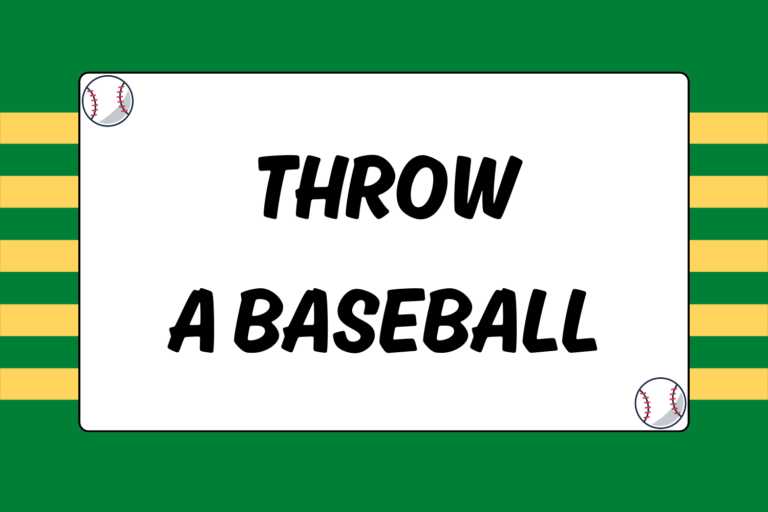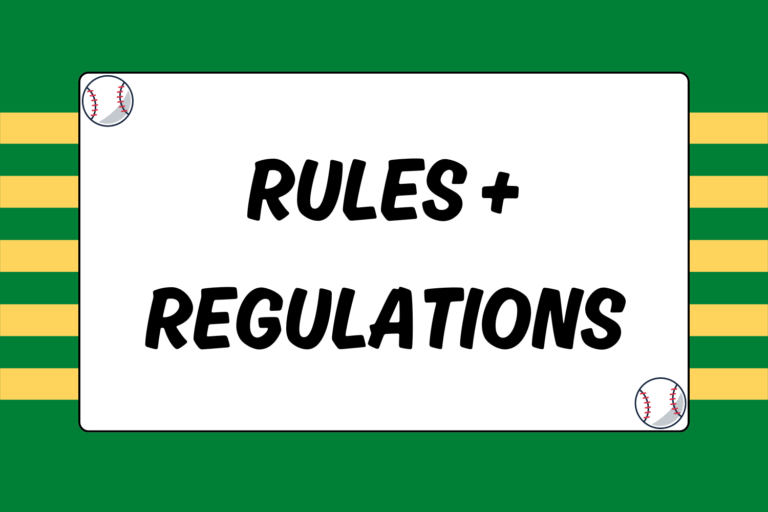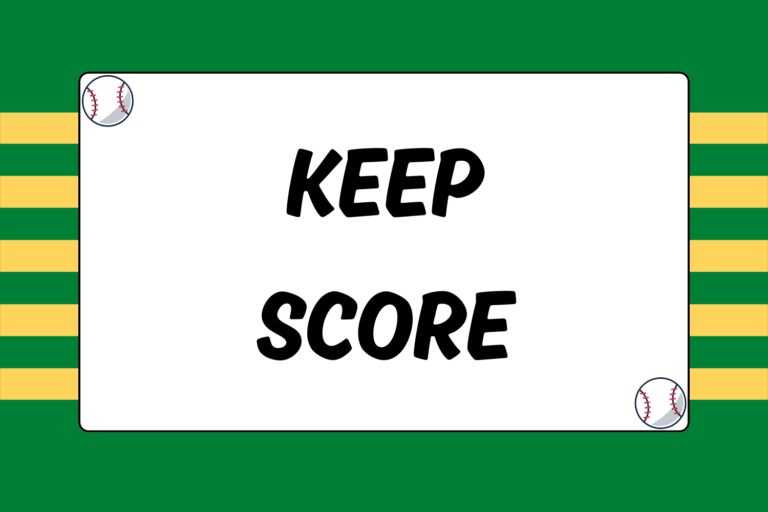The style and quality of high school baseball can vary a great deal depending on where you live. In some towns and cities, the number of players and/or the interest level in the sport are such that pretty much everyone who wants to play for their high school makes the team. In other areas, schools may have 100 or more kids trying out for a 20-person team. Odds are that most schools are somewhere in the middle. However, even if your high school doesn’t have a ton of players trying out, the fear of being cut can be a nerve-wracking experience.
The most obvious things high school coaches look for during tryouts – especially when there are a lot of players – are raw, natural abilities: Power, speed, and arm strength. Usually there are a few players who stand out as the most gifted, but when it comes to selecting the rest of the team, the coaches will have to consider several other factors. Most coaches are aware of the fact that when the talent levels are fairly close, it’s very difficult to determine the best pitchers, hitters, and fielders in just a few days of tryouts.
Everyone makes an error or strikes out occasionally, but most coaches will be looking for the best all-around baseball players, the most natural athletes, and those with the best fundamentals. Coaches will certainly be attracted to power and velocity, but if you don’t have those, you need to find another way to make yourself stand out.
So it’s the first day of high school tryouts. How should you prepare? How should you behave? What should your focus and mentality be? How do you show off your best abilities? Luckily, this guide is here to help with tips on how to make a good impression.
Dress Properly
The way you carry yourself on the field will dramatically impact your coaches’ first impressions, and it starts with your uniform. Wear your hat straight, tuck in your shirt, wear a belt, and don’t sag your pants. Another good tip is to avoid wearing overly baggy clothing. That style has recently become more common, but many coaches still view it as sloppy.
Hustle
When you step on the field you should run everywhere, and approach each task or drill with enthusiasm. When coaches are trying to evaluate talent potential for dozens of players, you can easily exclude yourself by walking or appearing to be lazy.
Showcase your Speed
Both good speed and bad speed are relatively easy to spot. Therefore, speed is one of the primary things coaches notice. Good speed tends to indicate good athleticism. So if you’re a good athlete, take every opportunity to show it off. In addition, speed does not just mean running speed. It also means first-step quickness, the speed of catching and throwing, bat speed, range in the infield and outfield, and the ability to think quickly during the game. There are countless game situations in which speed and quickness are useful, so do your best to show your coaches that the team needs you.
Make Good Throws
It may sound obvious, but the ability to throw the ball firmly and accurately cannot be underrated, because, frankly, not everyone can do it. Whether you’re playing catch to warm up, pitching, or playing any position on the field, make every throw with diligence and concentration. Sometimes it may only take one bad throw to make a coach skeptical about your abilities.
Many coaches take the approach that if a player has a strong, accurate arm with good mechanics, he can generally be taught to play any position. If a player lacks a strong arm or has problems with accuracy, it can be difficult to trust him on defense.
Fundamentals Over Flash
Coaches generally look for infielders who have quick footwork, good hands, and strong fielding fundamentals. For outfielders, the focus is on the ability to get good, quick jumps and catch fly balls consistently, as well as the ability to return the ball to the infield with strong, accurate throws. This not to say that diving plays and circus catches won’t get you noticed (they will), but those plays tend to be fluky. A mechanically strong defender will undoubtedly stand out, and those are the players that coaches feel safe putting in their lineups. (Note: If you have a chance to dive for a ball, do it! Coaches love to see players diving and doing whatever it takes to make a play.)
Handle the Bat
Being a good hitter, even at the high school level, entails more than just hitting the ball a long way. Of course you are not likely to get noticed or selected if you fail to drive the ball or hit any pitches hard at tryouts. However, you definitely should not just swing from your heals and try to launch as many deep balls as you can, either. Instead, try to showcase your bat speed and your ability to handle the lumber. Sometimes this means driving a ball when you get a good pitch to hit. Sometimes it means laying off bad pitches, and other times it means adjusting to an off-speed pitch or a pitch off the plate and being able to use the opposite field. Generally, coaches will recognize the players who can regularly “square up” the baseball, who can hit the ball to all fields, who have good balance at the plate, and who have the bat speed to keep up with high school pitching.
Command your Pitches
Most coaches would agree on one fact about high school pitching: Velocity is important, but it’s also secondary. Whether you throw 75, 85, or 95 miles per hour, any pitcher can succeed in high school with the ability to command multiple pitches. If you lack exceptional velocity, you can make up for it by consistently throwing strikes, keeping the ball down, and working both sides of the plate.
Be able to throw a second – and ideally a third pitch – for a strike, and you should be in good shape. When evaluating pitching potential, coaches tend to look for solid mechanics (with good balance), composure and confidence on the mound, good movement on your pitches, and the ability to locate the ball down in the strike zone.
Master a Change-up
As a pitcher, an important concept to know is relative velocity. Ultimately, your velocity is only as good as your ability to disrupt hitters’ timing. Not all fastballs are created equal. An 85-MPH pitch may be easy or extremely difficult to hit depending on how quickly the batter can track the pitch out of your hand, as well as the ball’s movement and zip, and your release point. For this same reason, a good change-up can be the most valuable pitch in your repertoire.
For a change-up to be effective, you need to throw it with the same arm action as your fastball; to the hitter, they should be indistinguishable. In addition, the change-up needs to be around (and ideally more than) 10 MPH slower than your fastball to be successfully deceptive. If you can “sell” the pitch properly, a 70-MPH change-up will make an 80-MPH fastball seem significantly faster. Hall-of-Famer Warren Spahn once said, “Hitting is timing. Pitching is upsetting timing.” When it comes to getting hitters to miss pitches, the ability to mix speeds is much more important than the ability to hit high velocities.
Compete! Show Passion for the Game
Playing high school baseball is a significant time commitment, and not everyone is capable of juggling schoolwork, class, practice, travel, and everything else that goes into being a student-athlete. Don’t give your coaches any reason to think you cannot handle it. Go to class on time and maintain good relationships with your teachers. Come out to the field with enthusiasm and work your tail off every chance you get. Never give up on an at-bat, and don’t hang your head after an error. Show your coaches that you have the passion and work ethic necessary to be a valuable player.
Be Coachable
When it comes to selecting from a group of players with similar talent levels, coaches will always choose the guys with which they would rather spend every afternoon on the field. Be likable. Show up on time, help with gear and field equipment. Be a good teammate, buy into your coach’s philosophies, take coaching and constructive criticism well, and constantly work to improve yourself. Coaches love coaching players like that. Ultimately, if you can’t wow anyone with your bat, your legs or your arm, do everything you can to make your coaches think, “I want this kid on my team.”





